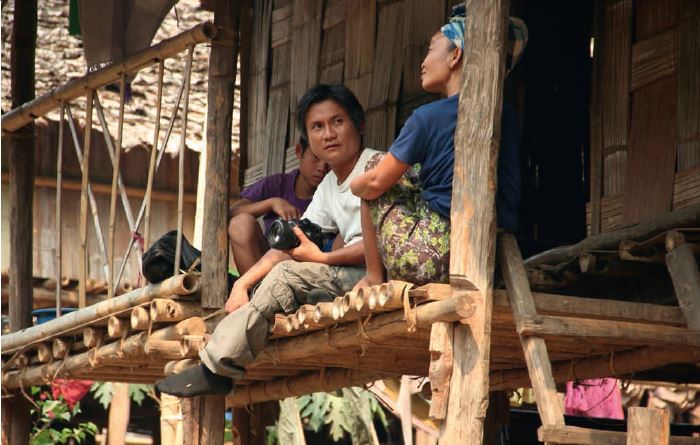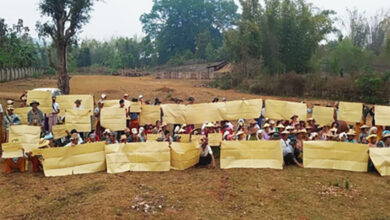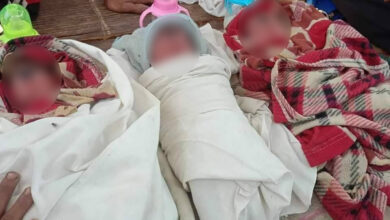Burma’s different voices

Myanmar’s ethnic media is at a crossroads writes Ko Htwe. Government restrictions have eased, but ethnic groups are still fighting for an equal voice.
Myanmar’s independent media suffered during 60 years of military rule. The country’s dictator, General Ne Win, effectively banned or censored any media that was not state owned. While a series of reforms implemented by President Thein Sein’s nominally civilian government over the past 18 months has significantly improved press freedom, Myanmar’s ethnic media still faces serious difficulties.
Say Reh Soe is the editor of the Kantaryawaddy Times (KT), a news agency dedicated to reporting on issues relating to Kayah state in Burma’s east and its predominantly Karenni population. He recently returned to Myanmar after a lengthy exile on the Thai-Myanmar border, where he had been producing a bi-monthly newspaper.
In 2012, Say Reh Soe received a temporary six-month licence from the Myanmar government to print and distribute the newspaper inside the country. Distribution began in January 2013.
“It is not easy to work inside. We have many obstacles. While other journals are publishing daily and weekly newspapers, we just started a monthly journal so our news is not fresh,” he explains.
The 20-page monthly journal has a print run of 1000 and sells for about 300 Kyats (a little over 37 cents). Despite its Karenni focus, the journal is published in Burmese, in order to appeal to a wider audience. Many copies get passed around two or three times among a population starved for local news. There is no daily paper printed in Kayah state, the country’s smallest.
Say Reh Soe says interviewing local officials remains difficult in a country where the media had been restricted for so long.
“Publishing inside we need sources and interviews with government officials but they still see us as outside media so it is difficult to get in contact with them.”
As in most areas outside Burma’s major cities, phone and internet access is at best haphazard, and often non-existent.
He points out that travel, too, is difficult in Kayah state. The countryside is controlled by a number of armed rebel groups, government backed militias and military forces. “In our state, there are many different armed groups from other small minorities and to go to their area we need permission from them.”
In the past, when Say Reh Soe was distributing Kantaryawaddy Times outside Burma, his newspaper was printed in the Karrenni language. This saw the government labels it as ‘rebel literature’.
“We will discuss with our members whether to put our language back in the paper later,” he says.
In Myanmar, the Kachin, Karreni, Karen, Chin, Mon, Arakan and Shan ethnic groups have their own literature and language. The first ethnic Karen language newspapers appeared between 1836 and 1846. In 1842, the Baptist mission printed a monthly publication in the Karen-language Sgaw. But after the Ne Win regime took power in 1962, all the ethnic publications disappeared.
It took until the 1990s before ethnic media reappeared among exiled communities. The Shan Herald Agency for News (SHAN), operated by Shan exiles since 1974, provided regular reporting on Shan state, Myanmar’s largest and most ethnically diverse. Reporting on the region’s long-running civil war and its infamous drug trade, SHAN supplied news and analysis that was missing from mainstream sources.
But the recent ‘democratic’ developments in Myanmar have resulted in international donors cutting their funding for the various exile news organisations and those, like the Democratic Voice of Burma, that focus on national news. This has been a blow for groups that only recently have been given permission to have their correspondents report from inside Myanmar.
For non-Burmese speakers, the ethic media is often their only source of news. The mainstream media uses a language they don’t understand. It’s a problem for indigenous people right across Asia.
According to the Indigenous Voices in Asia Pacific report, by the Asia-Pacific Regional Centre of the United Nations Development Program, mainstream media has failed to include indigenous peoples, both in terms of diversity in their staff and in the content they produce.
“This has been far from ideal,” the report states, “for example, while environmental damage, infringements on land rights and transgressions of cultural norms are issues that have often been covered, the points-of view of indigenous peoples have largely been missing.”
Pascal Khoo Thwe, an award-winning novelist from Burma’s minority Padaung people, has said: “Media in any form is important for maintaining ethnic culture. Therefore it is necessary to have proper media outlets for ethnic groups. It will help each group understand and explore their own culture.”
But long-time Myanmar watchers point out that many of the ethnic media formed in exile have close ties to Myanmar’s armed rebel groups and rarely, if ever, have coverage critical of the actions of such groups.
This is refuted by Khuensai Jaiyen, the respected long-time editor of the Shan Herald which runs regular interviews with the senior leadership of the Shan State Army South. “There are also causes regarding the arm groups that we have to report without omission,” he says.
Han Mai was a member of the All Burma Student Democratic Front (ABDSF), a rebel group formed by students who fled to Myanmar’s borders after the 1988 uprising. He worked in Thailand as journalist covering Myanmar for many years and believes it’s important that the independent media not only provides critical coverage of military and the nominally civilian government, but also of the various rebel groups as well.
Han Mai reported last year on allegations that troops from the Kachin Independence Army (KIA), the last major rebel group not to sign a ceasefire with the central government, abused local women in their area of control. Many ethnic youth and former fighters come to Thailand to be trained as journalists, and they play an important role.
“Communicating with ethnic language can build trust and it is more easy to hunt news because many ethnic minorities viewed the government as Burma, and that caused racial hatred,” says Han Mai.
These ethnic journalists are seen as a reliable outlet for local ethnic people who have suffered oppression and do not believe the state-owned media or trust journalists speaking Burmese.
“Ethnic minorities have been discriminated [against] not only in education, health, economic but also citizenship for decades, which are hard to disclose under the military regime. But nowadays it is open and can reveal what is happening in ethnic and remote area so ethnic journalists are important,” Han Mai explains.
While Myanmar’s government has now allowed the publication of two dozen daily newspapers and more than 150 weekly journals in Burmese and English, it is still hard to find any published in an ethnic language.
Nan Paw Gay, the editor of the Karen Information Centre (KIC), says journals with ethnic language are less than 10 per cent of what’s published in Myanmar and there are only eight ethnic journals published outside the country.
KIC started publishing a Karen-Myanmar language journal in September with the permission of the Ministry of Information. The plan is to distribute it in Karen state, Pegu, Irrawaddy and the Rangoon Division where many Karen people are living.
In August 2012, the Nationalities Brotherhood Forum (NBF), an alliance of Chin, Mon, Shan, Arakanese, Karen and Karenni political parties, released a statement to support the publishing of newsletters and journals in ethnic languages. The NBF said some ethnic journals from outside the country were trying to register their publications inside in both Burmese and ethnic languages.
“Ethnic journals different from Burmese are needed that can report on the respective ethnic people, their history, culture and literature. Burma has many different ethnic people and all of the journals, magazines and periodicals published only in Burmese
will destroy the characteristics and identity of ethnic people and by neglecting the views of the minority,” says Nan Paw Gay.
“This is against the aims of democracy. Respecting equal rights, the role of the ethnic people, is also important in the affairs of the state.”
Amart-dein Journal is a quarterly in the Mon language. It was selling 3000 copies illegally within Mon state, but is now permitted to publish legally in Myanmar.
Another Mon language monthly, Guiding Star, also received temporary permission to publish inside Burma on February 15, 2013.
Mon journalist Nai Arkar says the journal is hitting two birds with one stone. “It is preservation our language and some Mon who cannot read or write Myanmar can read it easily,” he says.
Article 16, of the United Nations Declaration on the Rights of Indigenous Peoples states “Indigenous peoples have the right to establish their own media in their own languages and to have access to all forms of non-indigenous media without discrimination.”
It also states: “States, without prejudice to ensuring full freedom of expression, should encourage privately owned media to adequately reflect indigenous cultural diversity.”
Myanmar’s first ethnic media conference was held in Moulmein, capital of Mon state, in April and urged the promoting and the development of ethnic language media, but the struggle continues.
*Ko Htwe is ethnic journalist from Myanmar based in Chiang Mai, Thailand.
**This article first appeared on The Walkley Magazine on October, 2013.




